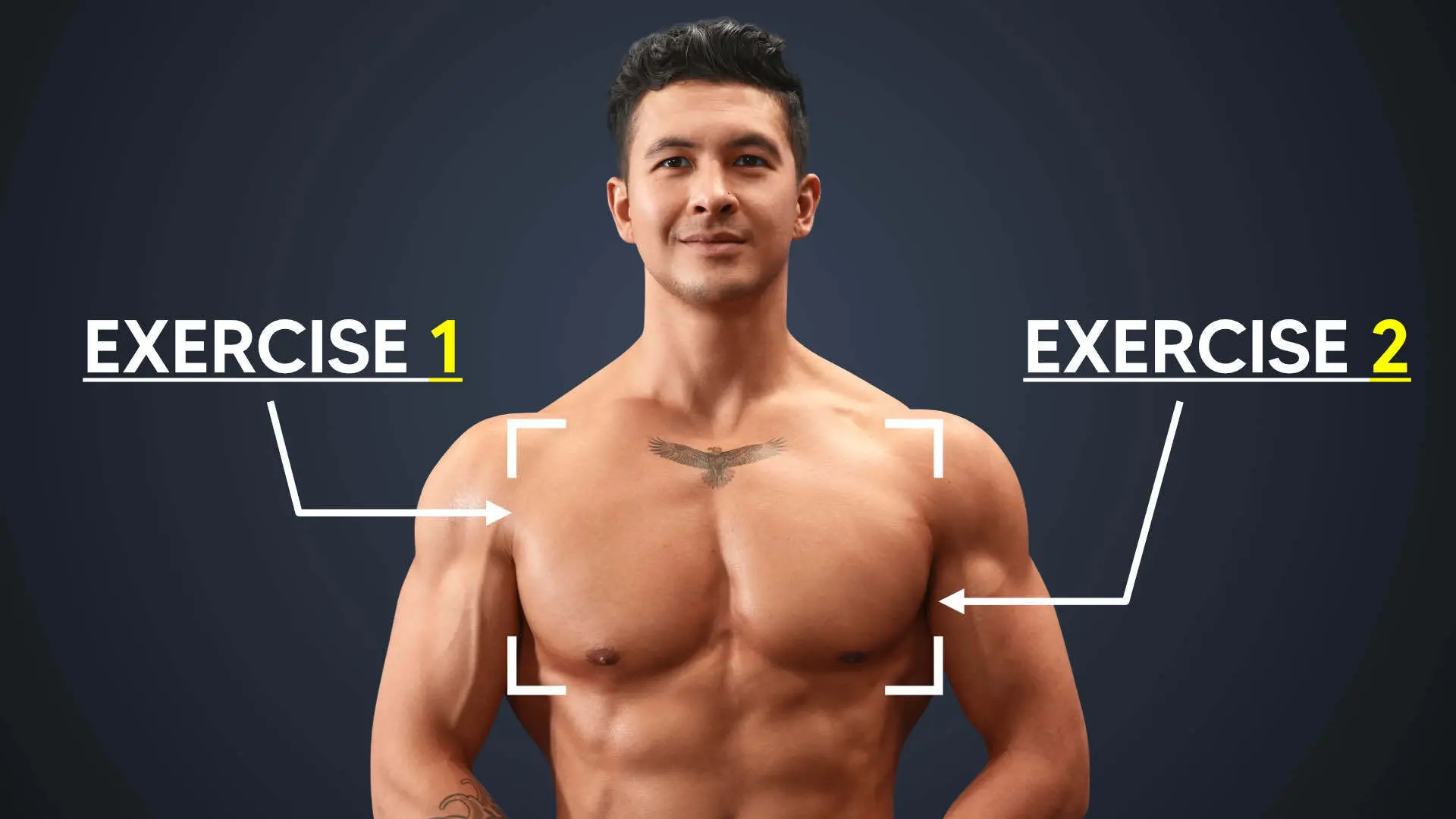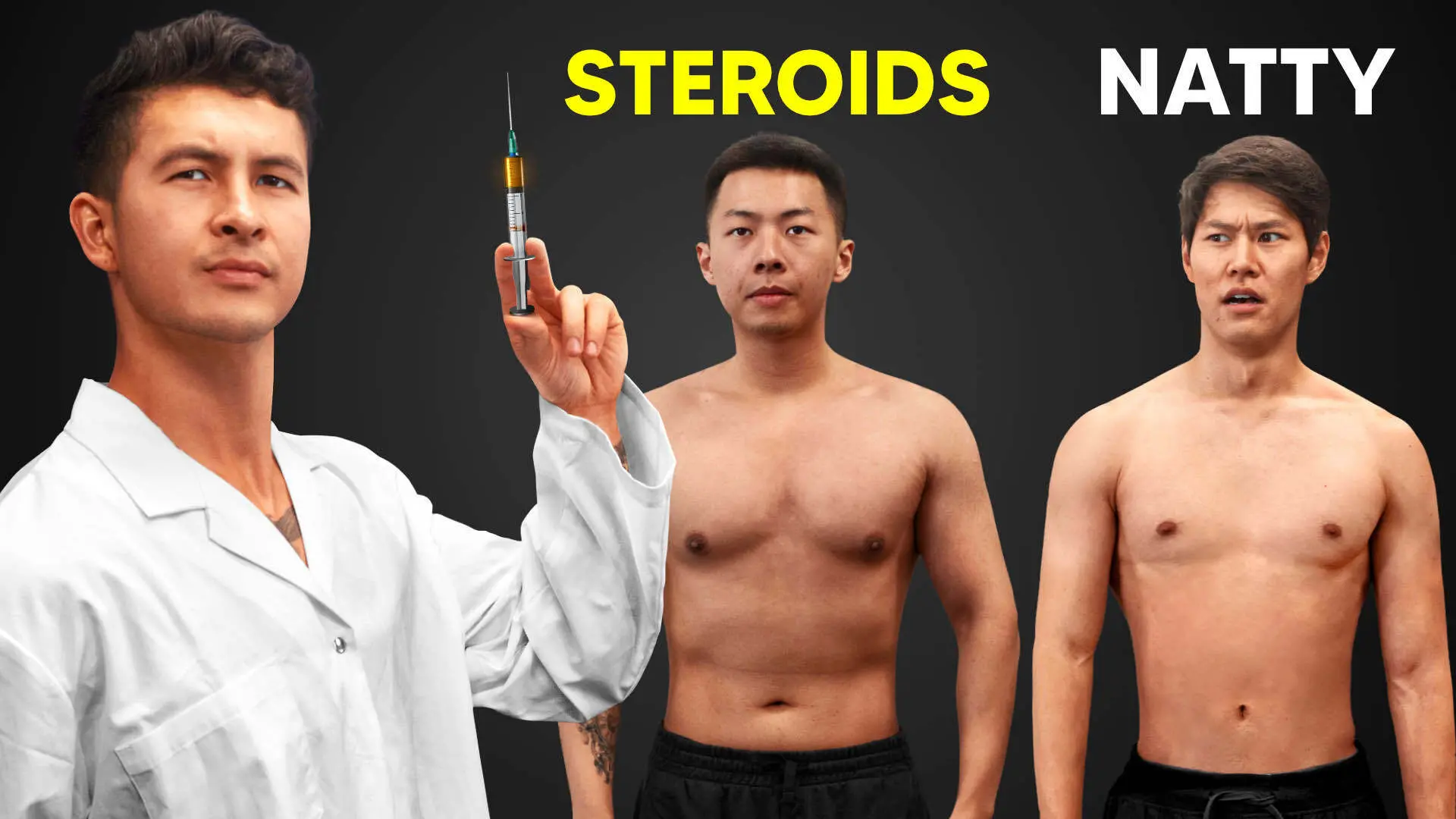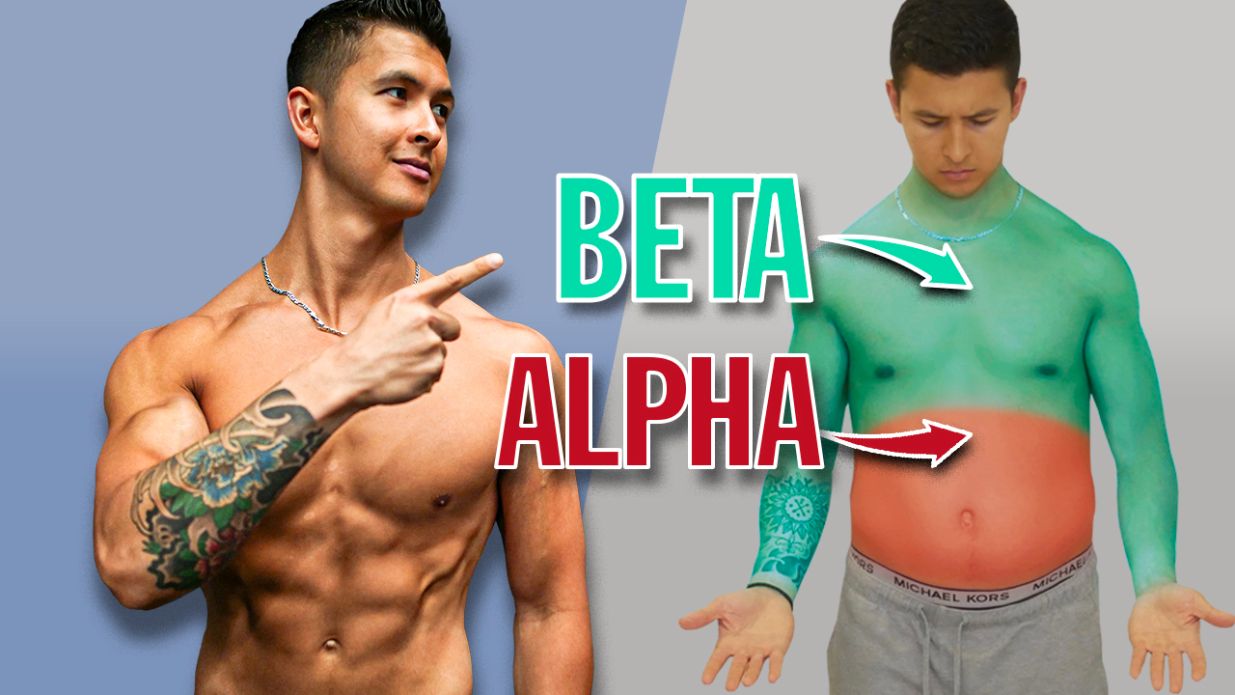
4 Things Nobody Tells You About Weight Loss (AVOID MISTAKES!)
You don't have to struggle with weight loss. Here, I outline the 4 things you need to know that'll significantly increase your chance of achieving your ideal weight.
The vast majority of people who attempt a diet to lose fat fail. It’s a proven fact. Now, there are many reasons for this failure. But what I've found (both in the literature and with helping thousands of people successfully transform their bodies), is there are 4 fat loss tips that if people simply just knew of before dieting, would greatly increase their chance of success at weight loss. Today, we’ll reveal what those are. And how you can use them to your advantage.
Before that: if you're looking for a training program that'll take care of all the factors necessary for optimal weight loss (training, nutrition, and even supplementation), I've got just the thing for you. Every BWS program is designed to help you transform your physique in the most time-efficient manner. And best of all? It's all rooted in science. For more information on how BWS programs can help you to look better - FAST:
Click the button below to take my analysis quiz to discover the best program for you:
↓
#1: Not All Body Fat Is The Same
Most people are unaware that not all body fat is created equally. Within our fat cells are two receptors:
- Alpha receptors: Alpha as in "awful". This is because alpha receptors tell the body to store fat rather than burn it.
- Beta receptors: Beta as in "beautiful". This is because beta receptors do the opposite as alpha ones; they encourage fat to be burend off for energy.
Where do we have the highest density of these awful alpha receptors on the body? That depends on our biological sex:
- Males: Belly fat and love handles (to protect our internal organs)
- Females: Hips and waist (for child-bearing purposes)
This is what makes these areas so “stubborn” to lose fat from. Yet is often where most of us starting a diet want to lose fat from first.
This then leads many of us to question, is there a “shortcut” to burning off fat from these stubborn areas?
For example, can abs exercises be used to spot reduce fat from stubborn areas like the belly? Well, a 2011 paper tested just that. The findings? It found that 6 weeks of direct ab training 5 days a week had no effect on reducing belly fat in overweight subjects.
In fact, various studies have tested all the most popular “solutions” to losing stubborn fat (that even I’ve tried out in the past myself in hopes of a shortcut).
There Is No Shortcut That'll Get Stubborn Fat Off Quickly
Despite the proposed theories behind these methods, though, studies have consistently found that, no:
- Avoiding carbs past 6 pm won't help
- Early morning fasted cardio won't help
- There aren't any special foods or unique diets that can help target those areas
- High-intensity cardio workouts won't help, either
So, if those don't work, what does?
Well, there is one method I’ve found and successfully tested with thousands of members of our Built With Science programs.
Here’s Archie who applied this successfully to lose their belly fat and love handles.
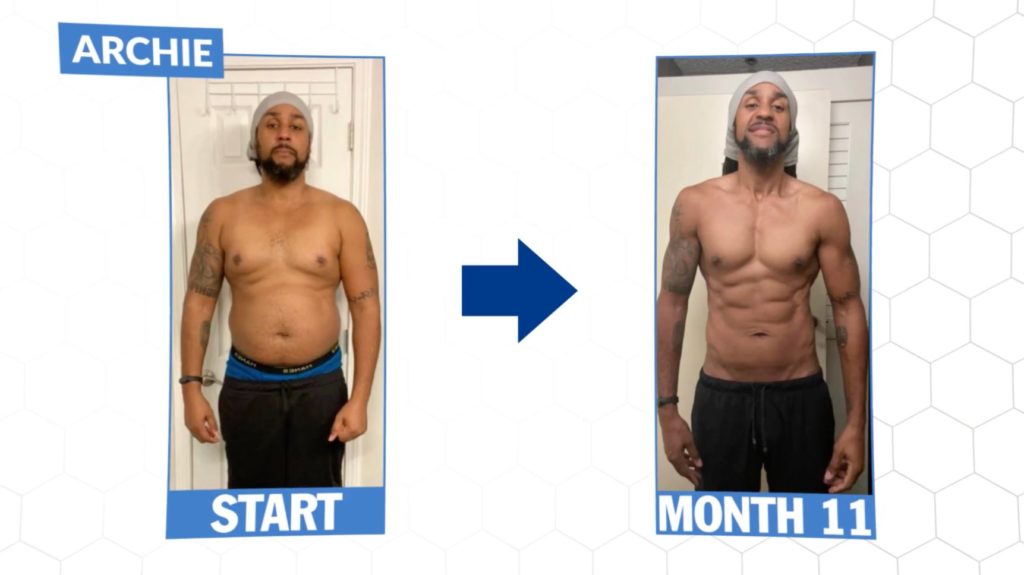
Here’s Katie who did the same to lose fat from her most stubborn areas.
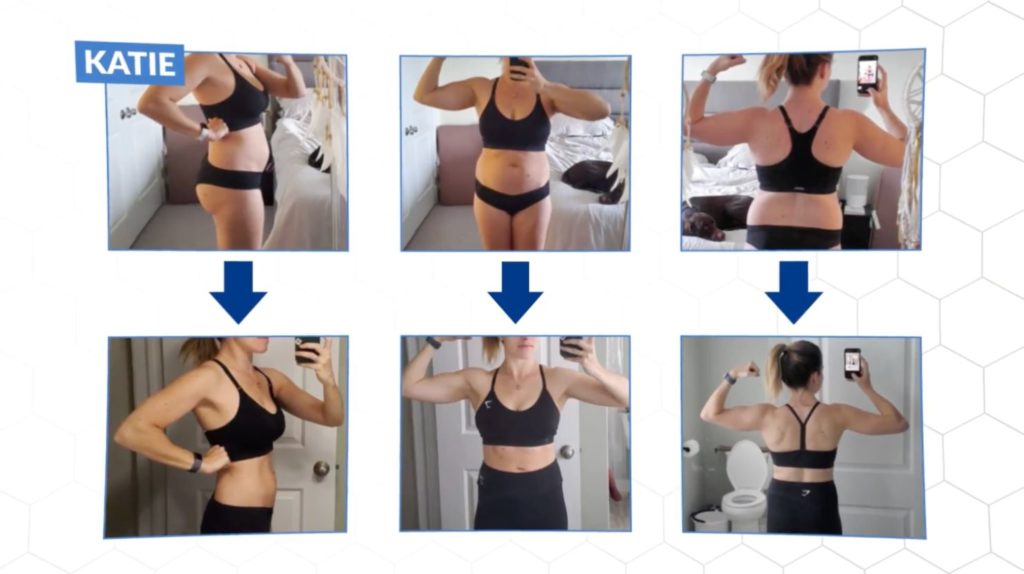
And here are two more examples from Kevin and Dominico, who lost it by applying this 1 thing.
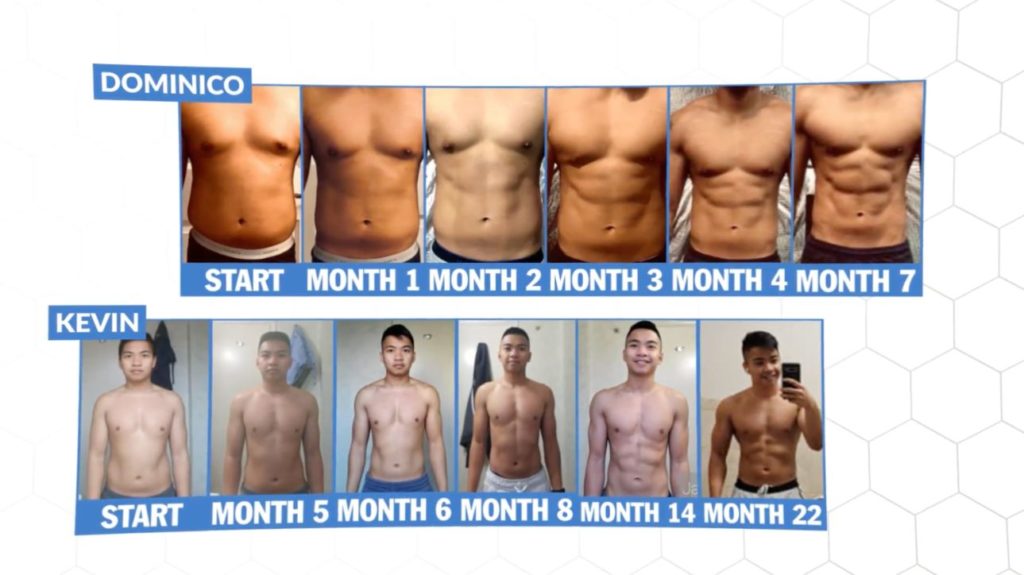
This 1 thing that was key to their success is actually something that you all have with you right now. But just haven’t properly applied it.
So, what is it? And how to lose stubborn body fat? You'll have to realize that your body will only start focusing on burning off your more stubborn fat cells for energy when you’ve lost enough fat cells from other areas of the body.
In the meantime, embrace the other changes you’re experiencing that most people overlook. Your face will look better. Your arms will be more defined. You’ll feel more energized. And you can trust that, eventually, the problem areas will come off. You just need to remain patient and consistent.
#2: Weight Loss Won't Be Linear
When most people go into a diet, they expect their weight loss to take place at a steady rate.
A steady rate of weight being lost every week. But take a look at the 1-year weight loss graph of one of our Built With Science program members, James.
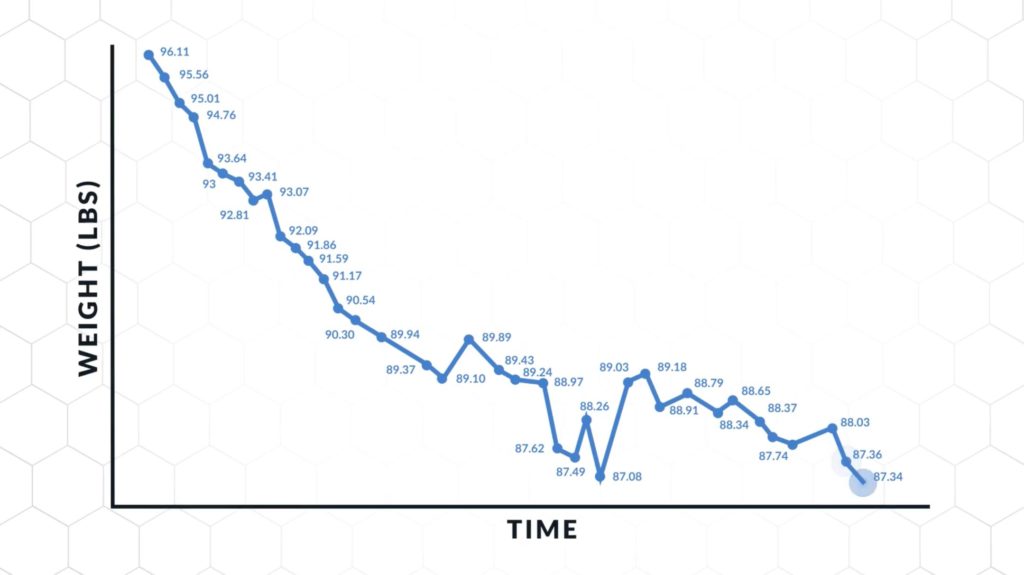
See all the ups and downs? The reality is, your weight will vary by up to five pounds day-to-day depending on:
- How much you've had to eat
- Whether or not you've used the washroom
- How hydrated you are
- Or some combination of the above
This means that after weeks of dieting, you may step onto the scale and find that you’ve even “gained” weight when in reality that wasn’t the case.
Aside from just being aware of this, what else can you do?
Pay Attention To The Overall Trend
To start, we recommend all of our Built With Science clients to weigh themselves every day using the same scale first thing in the morning. More specially, after they’ve used the washroom but before they eat or drink anything. If you apply this, you’ll still see some variation. But it won’t be as big.
Then, to improve this further, avoid paying attention to the day-to-day numbers. Instead, see what your average weight is for the week and compare those week to week. But, even then, as we saw with James’ graph these weekly weigh-ins will still fluctuate quite a bit. The key here is to focus on overall trends.
In the first few weeks, you’ll notice a big drop. That's because you're losing water weight. From then on, it should still trend downwards just not as fast.
But be prepared for periods of 2-3 weeks where your weight just doesn’t budge or even increases. This is completely normal. When this happens, it’s important you remain patient. Keep your stress levels low rather than doing anything crazy or coming to the conclusion that what you’re doing isn’t working. Oftentimes it just takes another week or two for your weight to drop back down to a new low.
However, in the event that your weekly weight hasn’t budged for at least 3 to 4 weeks into your weight loss program, then that’s a sign it may be a good time to change something up.
But wait. What's that "something" you should change? Is it your nutrition? Your workout plan? Or something else entirely? If you need more guidance, you'd be able to find it right on BWS programs:
Click the button below to take my analysis quiz to discover the best program for you:
↓
#3: Weight Loss Doesn't Mean Fat Loss
Although most of you reading will say “you want to lose weight” ... what you actually mean is you want to lose fat. "Fat loss" vs. "weight loss" is an important distinction.
If decreasing the number you see on the scale is your only goal, you can achieve this pretty quickly by eating very little food and doing a ton of cardio. The problem with this approach though, is it won’t leave you looking the way you want. This is because weight is made up of both fat and muscle. Although the very low-calorie, high-cardio approach will help you lose weight quickly, most of the weight you do lose will be muscle rather than fat.
The result? Pretty much just a “smaller” version of you. But with some of the negative side effects of muscle loss such as fatigue and hunger. To look and feel the way you really want, you need to lose fat while preserving or even building as much muscle as you can in the process (i.e., fat loss without muscle loss).
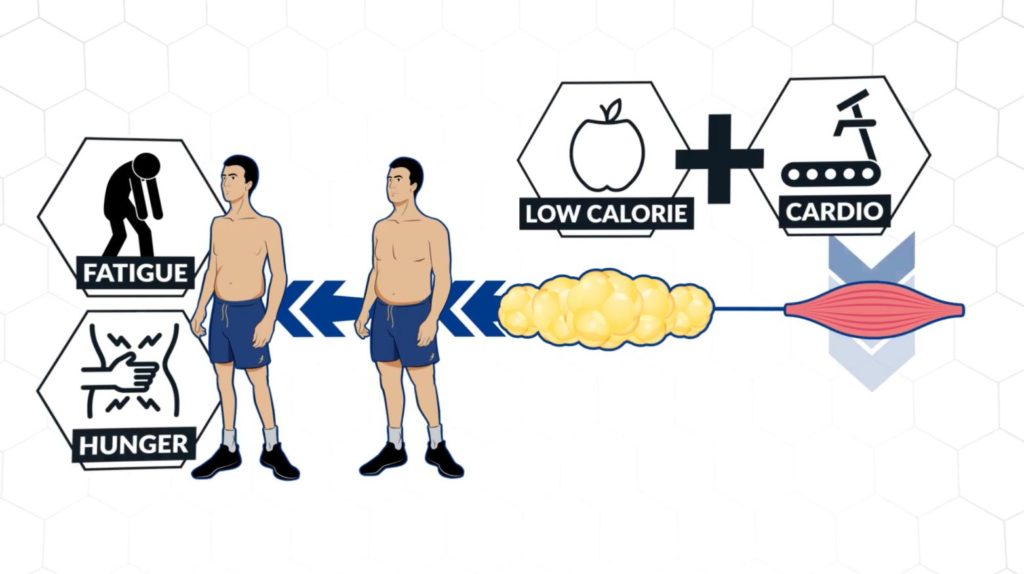
To ensure this happens as you lose weight, there are a few things you can do.
First off, as I’ve covered in past articles, focus on slow, gradual weight loss. Lose no more than 1% of your bodyweight per week. You also want to lift weights regularly; prioritizing those workouts rather than just doing a ton of cardio.
How To Lose Fat Without Losing Muscle (Or Minimal Amounts Of It)
Aside from this, one thing that seems to be increasingly important especially with new research emerging, is protein intake. A recent 2018 study illustrates this quite well. The researchers took a group of resistance-trained subjects and split them into one of two groups:
- Group 1: Decreased their current protein intake of 0.7g/lb of their body weight down to just 0.4g/lb
- Group 2: Increased their current protein intake of 0.7g/lb to 1.1g/lb
Since the low protein group had to cut out a bunch of protein, they ended up eating roughly 300 fewer calories per day than they were beforehand. Whereas the high protein group ended up eating about 250 calories more to meet their higher protein intake. They did this while continuing to lift weights regularly. What’s really interesting is that after 8 weeks, despite actually increasing their calories, the high protein group ended up losing significantly more fat while gaining more muscle than the low protein group.
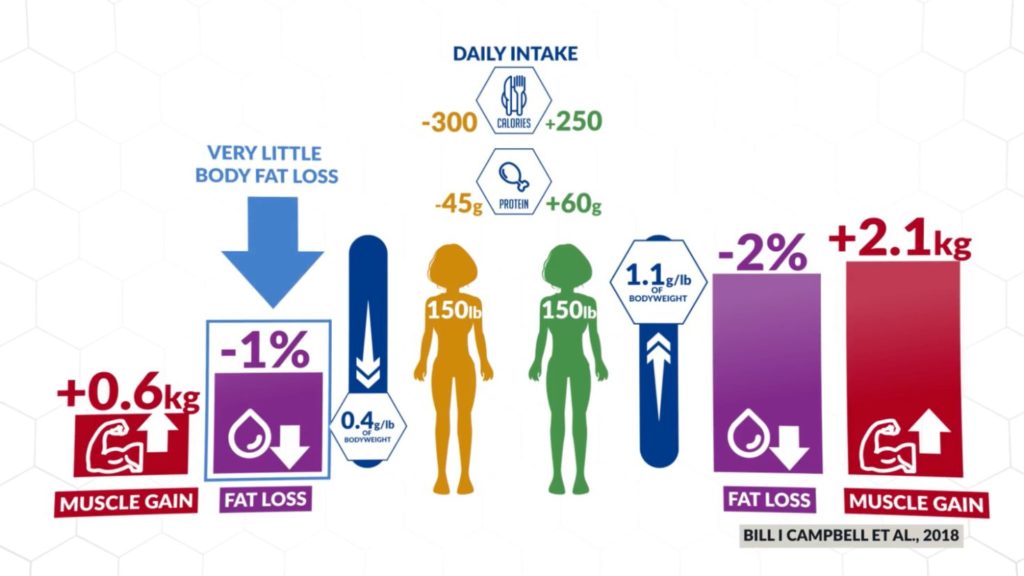
The researchers couldn’t pinpoint why exactly this happened, but other studies have found a similar effect when protein is increased.
Together, these studies illustrate the power of combining a high protein intake with resistance training. This is especially true when dieting and you’re limiting your calorie intake.
So to start, I’d recommend aiming to eat at least 0.8g/lb of your body weight in protein every day. If you’ve already been doing that, then experiment with increasing it up to 1.1g/lb of your body weight or even higher. You’ll still want to be mindful of how many calories you’re consuming as you do so. But, chances are, many of you will experience more favorable changes in your body composition with this simple adjustment.
#4: Weight Scale Doesn't Reveal All
So, we’ve been talking a lot about weight. And we even went through the importance of weighing yourself consistently. But here's the truth. The weight scale doesn’t reveal all. And it can get extremely frustrating when you’re doing everything right but it just doesn’t seem to budge.
This is why you need to look at other measures of progress. Our team of Built With Science coaches has every one of our clients not only weigh themselves regularly but also:
- Take progress pictures
- Keep track of their strength during their workouts
- Track their waist circumference AND
- Monitor their physiological changes
If, for example, your weight isn’t budging yet your strength is improving, your waist measurements are decreasing, you’re feeling more energized and have made positive changes with your lifestyle, then those are all signs that you're moving in the right direction regardless of what the number on the scale tells you.
Takeaway
It’s important that you set up your diet optimally from the beginning. And it's also equally important to know what to measure. That’s exactly why within our Built With Science programs we’ve not only created powerful custom tools for you to track your progress, but we’ve also designed them to automatically adjust the plan for you in the event that your progress slows down. It’s been the key to the thousands of transformations our members have experienced.
To get access today, just take our analysis quiz below to discover what approach is best for you and your body:
Click the button below to take my analysis quiz to discover the best program for you:
↓







